Nowadays, most of your business operations depend on some kind of computer program, including document management.
To effectively manage and control the most crucial information of your organization, you need to adopt and implement the right electronic document management system (EDMS).
Today, we’ll cover everything you need to know about this process, including best practices and what you should look for in document management software.
What is electronic document management?
Document management is the strategic discipline of storing, categorizing, sharing, and organizing your business information to meet your business goals.
So, electronic document management refers to the use of computer software or digital filing to make this process more efficient.
By digitizing paper documents and storing them in the cloud, you’re able to find information faster, as well as make it more readily available to others who may need it.But electronic document management isn’t just about being cloud-based. It’s about standardizing your document-related business processes and providing clear guidelines to handle documentation, so you can be prepared even for something like disaster recovery or providing information for audit trails.
When you have a defined path of action for each step in your document management or records management process, you can solve problems faster, innovate more often, and make better decisions.
To make all of this possible, document management systems provide a wide range of features, including:
- Internal search: find digital documents immediately by typing key terms in a user-friendly search bar
- Communication: centralize your communications in a single place
- Archiving and retrieval: archive and restore critical documents at will
- Version controls: explore the different versions of your documents
- Metadata: segment documents based on summarized information
- Storage and categorization: categorize your documents based on specified criteria
- File sharing: share files with relevant key members and stakeholders
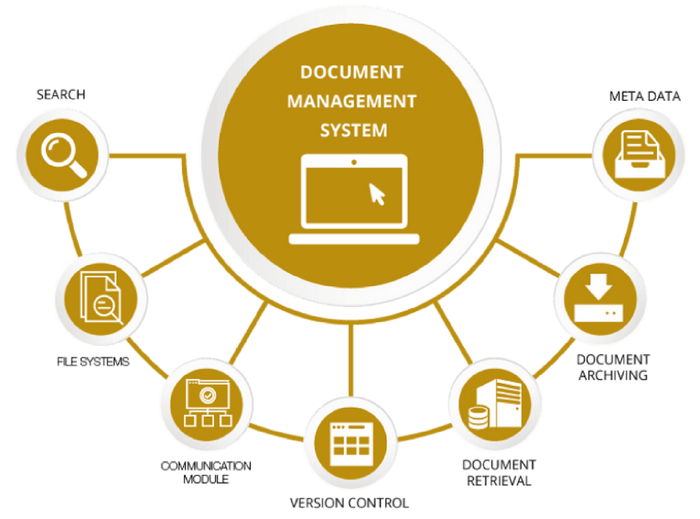
Before we explore these features in more detail, let’s quickly answer a crucial question.
Why is online document management so important for modern organizations?
On average, teams waste 5 hours per week waiting for information.
An even more surprising study reveals that roughly 8 out of 10 employees feel frustrated when they aren’t able to access digital documents when they need them.
Even though organizations have always dealt with information, the traditional way of managing documents is simply not efficient. As your business grows, so does the need to handle these different documents in an organized, secure, and strategic way, which can be a true challenge.
For example, let’s say that you’re an accounting firm with 50 clients.
Each month, you create 3 main documents for each client:
- A balance sheet
- A cash flow statement
- An income statement
This means that each month, you produce 150 new documents.
That’s 1,800 documents per year.
Imagine that one of your clients is going through a financial audit and requests a balance sheet you created a few years ago.
Searching through thousands of paper documents to find that information could take months — especially if it accidentally ended up in the wrong folder or box.
On the other hand, an electronic document management system could help you spot that particular balance sheet in seconds.
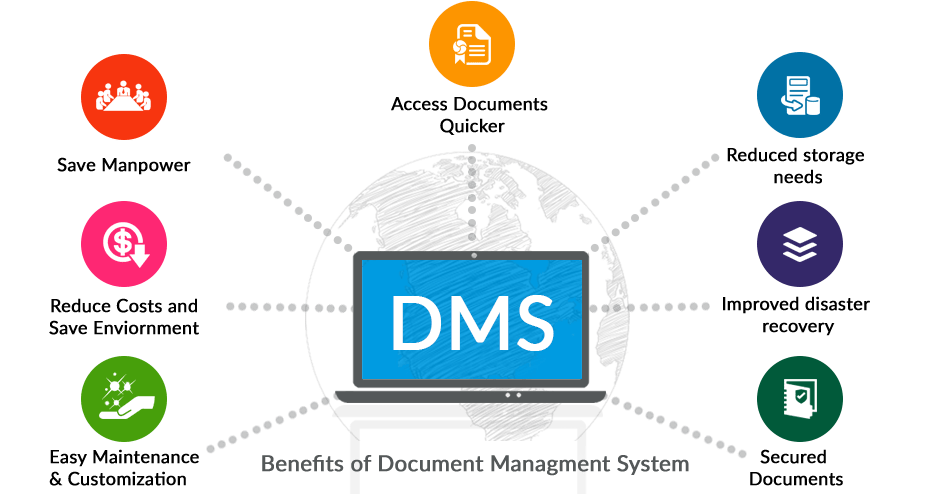
The power of a DMS lies in its ability to make information quickly available to the right people, at the right time.

What are the best practices for managing documents online?
Without the right practices in place, electronic document management is just a technical capability. To have successful, organized document management, you need clearly defined and scalable guiding principles.
So now that you understand the basics of this model, let’s quickly explore some of the best practices to implement document management in your business.
Implement document control and regulation
Document control and regulation refer to the creation of specific rules and guidelines your team must follow when dealing with organizational information, including document review and approval, quality assurance, and security procedures, like regulatory compliance.

These regulations will prevent potential mistakes when managing critical documents, as well as maintain your quality standards along the way.
Let’s explore some of the best practices for document control:
- Streamline your document approval workflow: define a specific path of action from document creation to delivery. With monday.com, you can create an automated document approval workflow.
- Centralize your workspace: get rid of silos between departments by building a central repository of knowledge and information.
- Define clear quality standards: define what success means for you and what deliverables should look like when they’re ready.
- Control changes and client requests: implement a change requests and management process for your documentation.
- Increase organization-wide transparency: make your document-related process more transparent and available for your team.
By adopting these practices, you’ll be able to better control your document workflow and make sure your team understands what they should be doing and when.
Prevent accidental data breaches and unauthorized access
Managing sensitive documents online involves some risks.
Since you’re storing confidential information in the cloud, your documents are more accessible to competitors and hackers.
That’s why you need to implement the right document security measures to protect your information and make sure only the right people can access it, including:
- Setting permission levels: set permission levels and define what specific team members can or can not do with your documents.
- Using a secure platform: use a platform that meets even the most rigorous security standards in your industry (just for the record, monday.com complies with SO/IEC 27001:2013).
- Backing up mission-critical information: create a backup for your most relevant documents on a regular basis.
Even though these practices don’t guarantee the integrity of your data, they’ll make it harder for anyone who wants to steal it.
Continuously audit history of changes
As your business grows, you’ll deal with different versions of your documents.
This is especially true for businesses that create new documents on a continuous basis (e.g., a content marketing agency that produces content for clients).

You need to make sure that your chosen DMS allows you to bring up the full history of your information and visualize who made what changes and when.
This way, you can get more control over document changes and quickly recover old versions in case you need them.
Standardize your document storage procedures
Having a huge database of information can lead to some problems, like increasing difficulty in finding specific documents quickly or increasing cloud storage costs.
Standardizing your document storage procedures can help you solve these challenges.
Some helpful ways to do it include:
- Using a standard document naming process: name your documents using metadata, making it easier to search and recover documents later.
- Constantly archiving or deleting obsolete documents: delete or archive documents you’re no longer using.
Adopt a reliable DMS
At the end of the day, it all boils down to choosing the right DMS for your organization — a system that adapts to your specific business needs and provides the necessary infrastructure to manage and protect your documents the right way.
In the next section, we’ll cover the essential elements you should consider during your selection process.
What should you look for when choosing a document management system?
Now that you understand the importance of adopting a powerful DMS, the question becomes: what should you look for in an electronic document management solution?
Let’s quickly cover some of the essential elements:
1. Cloud storage
Cloud storage is an essential feature because it helps you store way more information at a fraction of the cost of physical storage.
This is one of the reasons why nearly 80% of workloads will soon migrate to the cloud.
With monday.com, for example, you can store up to 1,000 GB worth of documents (depending on your subscription plan).
You can also share files with external parties — like clients, attorneys, and other stakeholders — and make sure the right people can access information.
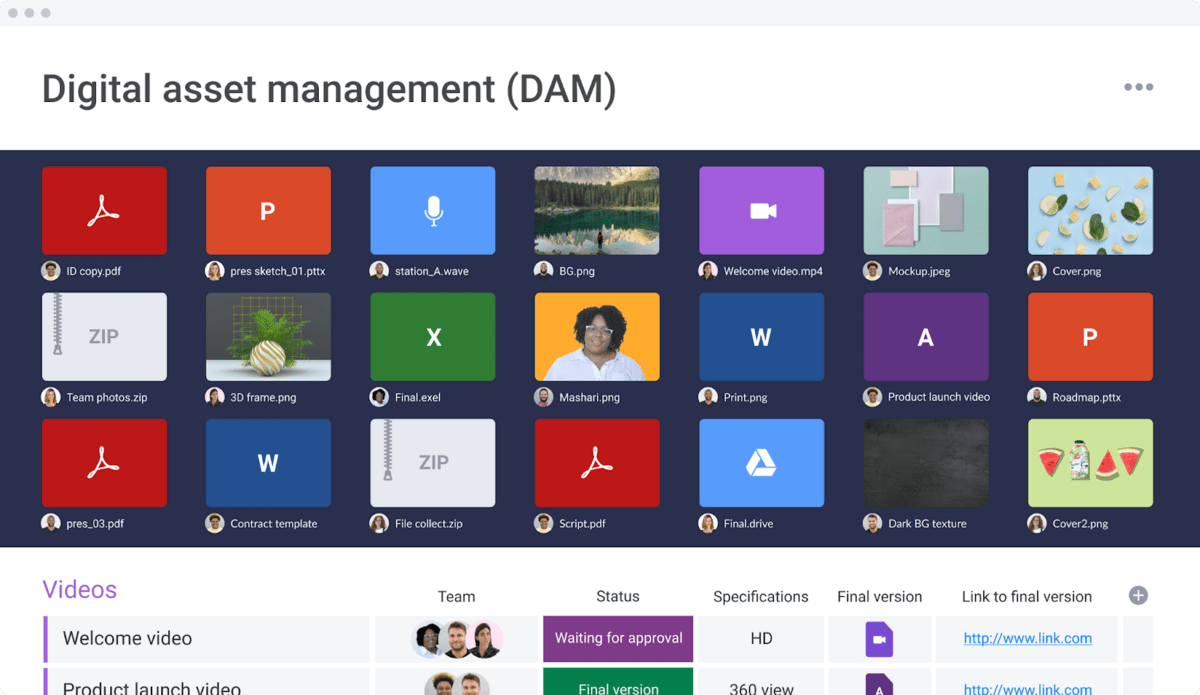
Besides, you can create unlimited boards to categorize your documents and segment information based on your specific business needs.
This can reduce your storage costs, all while making your information more accessible to team members.
Not only that, with monday workdocs, you can also create documents with teammates without leaving your main workspace on monday.com. From there, you can add boards, task owners, and more, centralizing your workflow even more.
2. Document control
As we mentioned earlier, document control is an essential step to properly manage your documents online. Otherwise, you’ll struggle with project governance and regulation.
Before you choose a particular software, make sure it offers the right document control features.
For example, with monday.com you can:
- Quickly archive and retrieve documents
- Manage information in a secure environment
- Set permission levels on your boards
- Explore the history of your documents
- Review and approve documents more efficiently
With the increasing volume of cybercrime, these features are no longer a luxury, but a must for any business.
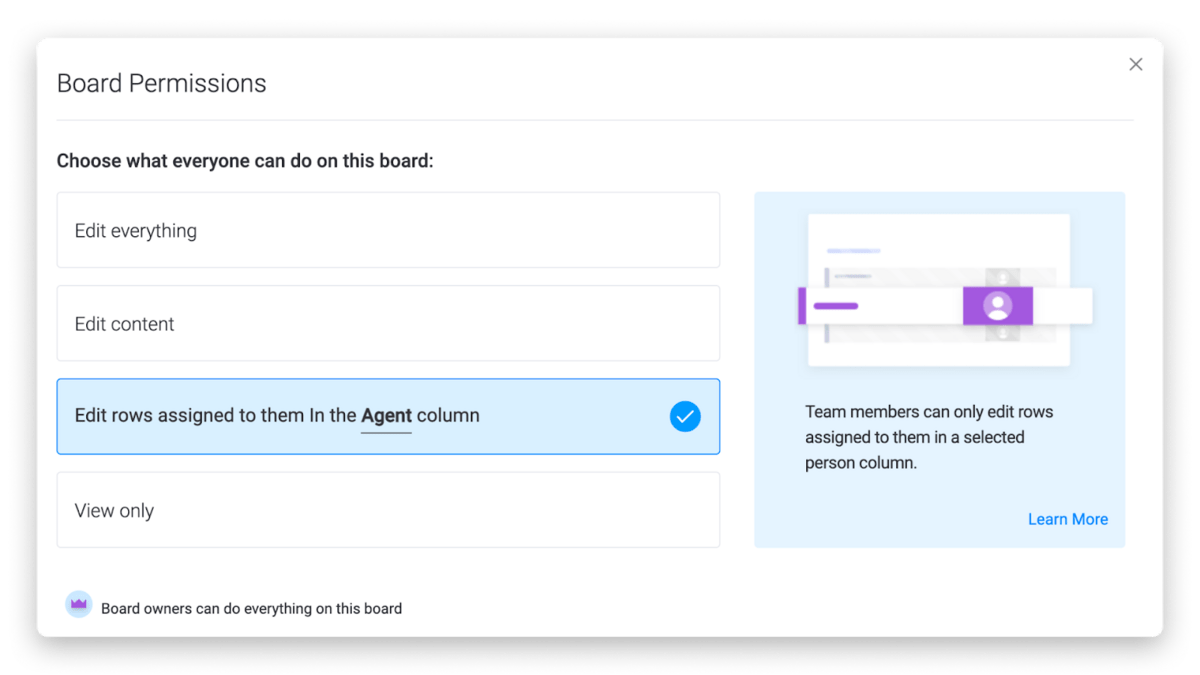
Cyber attack statistics are increasingly cause for alarm, with a recent study performed by the FBI reveals that cyber attacks have increased by 300% because of the COVID-19 pandemic.
With monday.com, you can gain more control over your information with defined permissions settings and well-defined best practices.
3. Seamless integrations
Modern organizations use many different tools and apps for their daily operations.
In 2020, the average business used well over 80 SaaS applications, according to Statista.
And you can be sure that this number will grow over time.
To properly manage documents and information, you need a system that integrates all your apps and tools into a single place.
When all your documents are located in a central repository, controlling your documents and enforcing compliance becomes easier.
For instance, with monday.com, you can seamlessly integrate 40+ of your favorite apps and tools.
Simply find and select a platform from our integrations list, follow the simple integration process we provide, and voila! You’re all set.
4. Advanced automations
Nearly 3 out of 10 activities in 60% of all occupations are fully automatable, says a recent study.
Document management is definitely an “automatable” activity.
Before you decide on a particular DMS, make sure it provides powerful workflow automation.
For example, monday.com’s automations center helps you streamline and automate over 250,000 human actions.
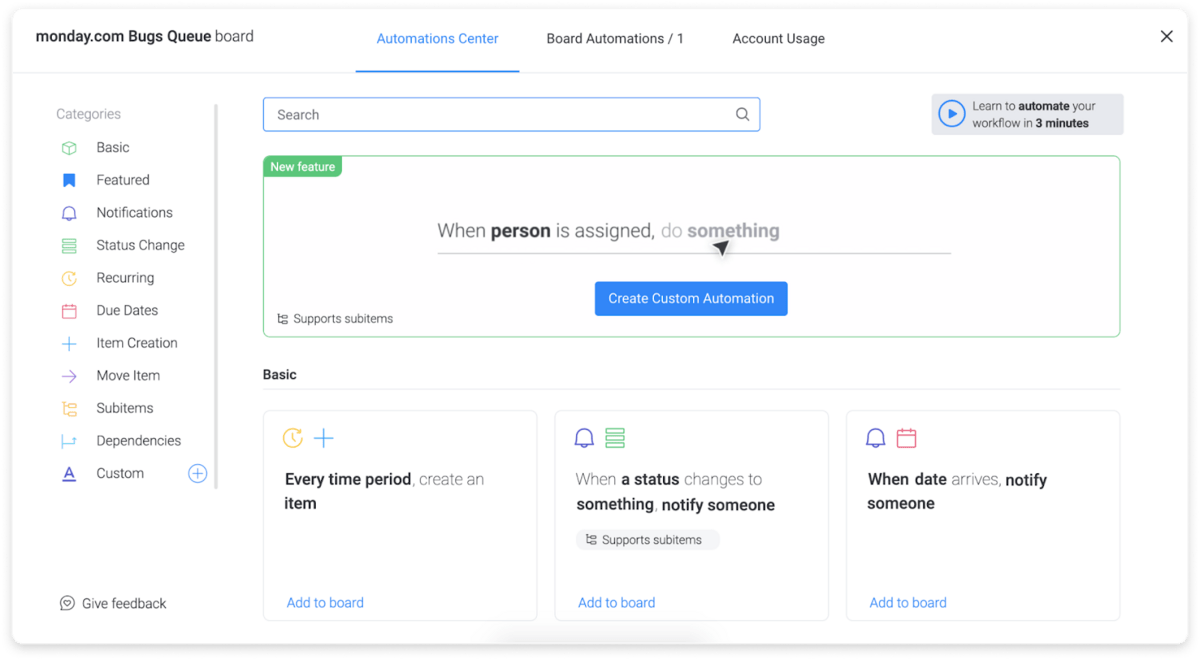
You can build custom automation recipes for recurring tasks, item creation, notifications, status changes, and many more.
For instance, you could build an automation so that every time a team member sends a document approval request, one of your managers gets a notification straight to their inbox.
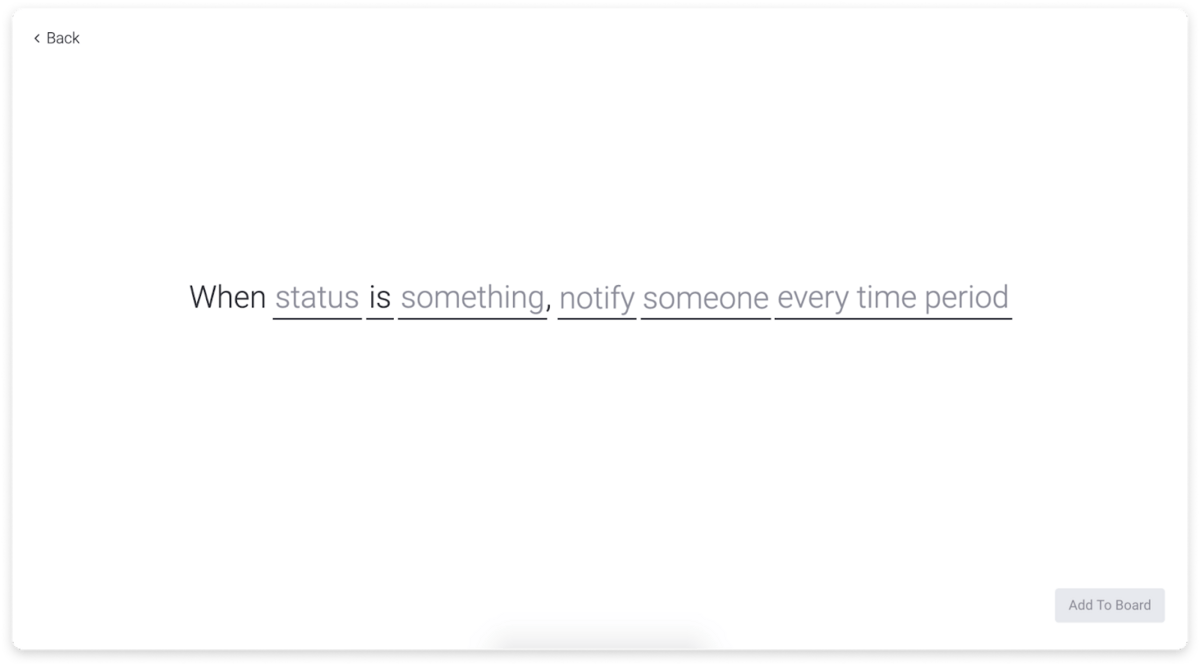
On top of that, you could set another recipe that automatically assigns a task to a team member whenever a document request is approved.
To get a more complete overview of monday.com’s automations center in action, please watch this short video:
5. Integrated document creation
To get the most out of your information, you must align your documents with your business objectives.
That’s why any solid DMS should provide you not only with the project management capabilities that help you store and manage documents, but also with the ability to actually create new documents natively within the same platform.
With monday.com, for example, you get use monday workdocs to create and store your collaborative documents in one Work OS. The powerful workdocs allow you to integrate live elements from your Work OS into your workdocs, so they are always updated without any manual work. Here are just a few ways centralized document management can look in a Work OS:
- Team management: assign team responsibilities and track progress in a single place.
- Collaboration and communication: bring your entire team into the same platform and centralize your communication.
- Multiple data views: visualize your information through different data views, like Kanban, Gantt, Calendar, Timeline, Workload, and more.
- Powerful reporting: customize your reporting dashboards and track the information that’s most valuable to you.
- Workflow templates: get access to 200+ pre-made templates for any business workflow.
And many more.
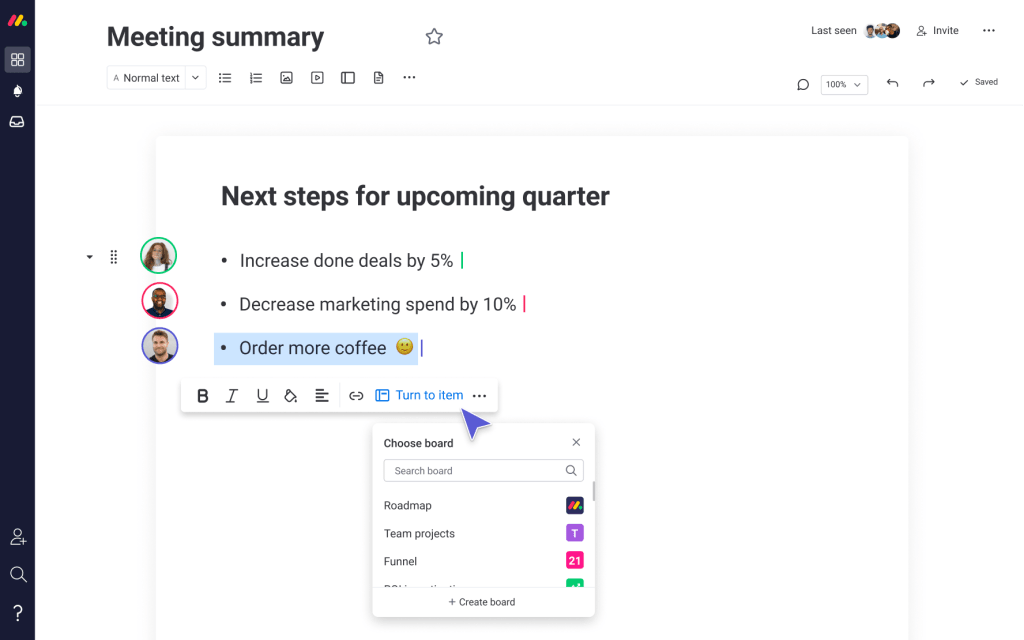
By merging document management, project management, automations, and a visual interface, monday.com helps you manage and control your documents in the most efficient way possible.
Let’s digitize your business
Whether it’s legal information, customer data, or client proposals — all businesses handle information.
That’s why you need to implement a system that helps you not only organize all this information but also share it and organize it strategically.
And, if you’re looking for a Work OS to centralize your work and manage your documents online, then monday.com could be the perfect fit for your organization.
With our digital asset management template, you can quickly streamline your document management workflows and get started on the right foot.

